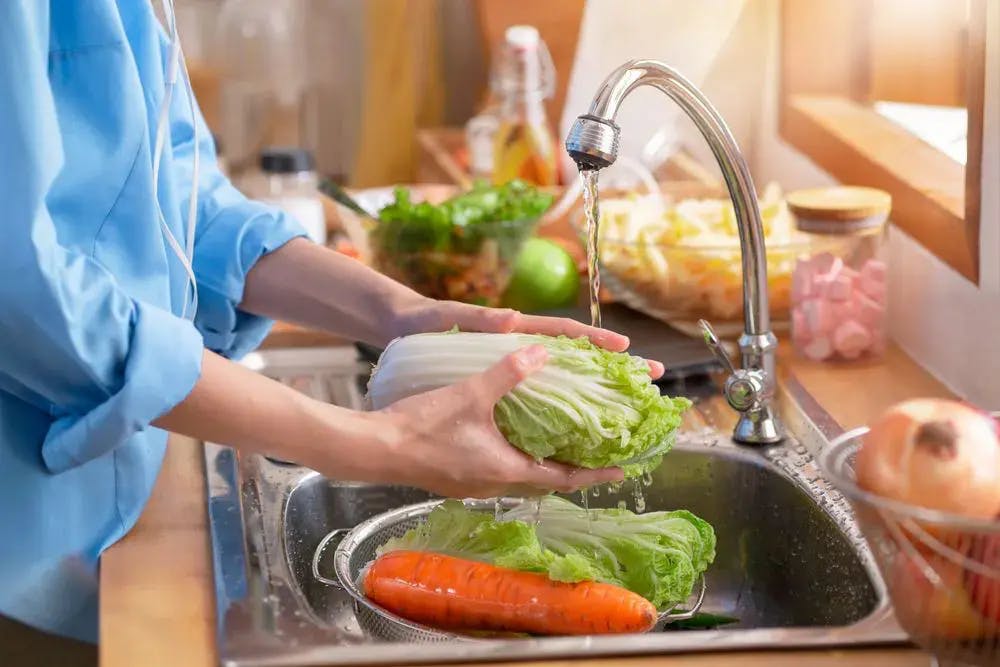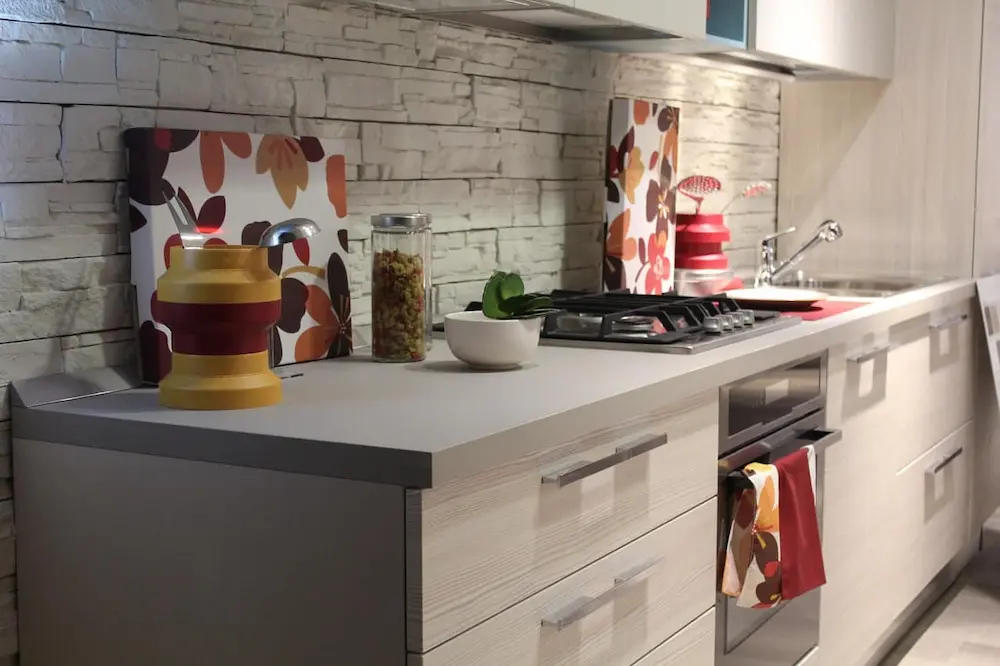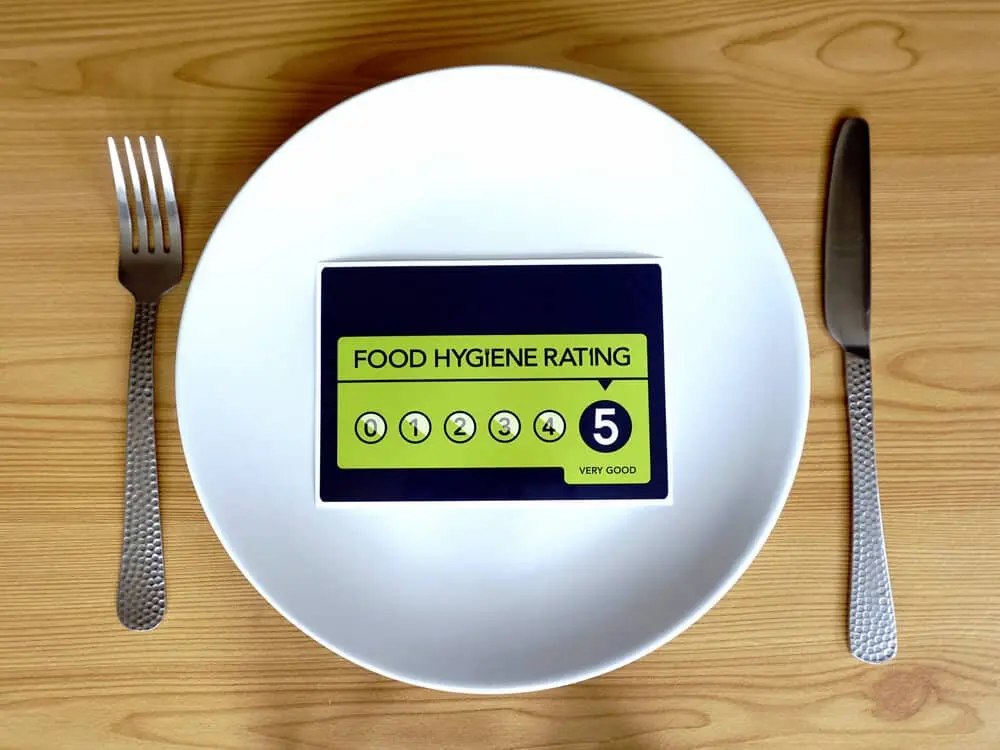The Importance of Good Food Hygiene in Care Homes

Estimated Reading Time: 6 minutes
Care homes are known for serving up three delicious and nutritious meals a day, along with additional snacks and hot drinks that are regularly available to residents. When this food is prepared and cooked, good hygiene practices must always be followed.
This article explains why food hygiene is important in care homes, the regulations that need to be followed, and food hygiene best practices.
Kickstart your care search
Find the best care homes in your area through Lottie.
In this article:
- What is food hygiene?
- Why is food hygiene important in a care home?
- Food Safety Act regulations and legal requirements for food hygiene
- Food hygiene CQC guidelines
- Food hygiene best practices
- What happens if care homes don’t have good food hygiene?
What Is Food Hygiene?
Although food hygiene and food safety are often used together, there’s a difference between the two terms.
Food safety refers to all practices that need to be followed to ensure food is safe. Meanwhile, food hygiene is a more specific area within food safety. Food hygiene refers to the processes that directly involve food and ingredients, including storage, preparation and cooking.
Why Is Food Hygiene Important In a Care Home?
Food hygiene is important in care homes as residents are often older adults with weaker immune systems. Many care home residents will also have illnesses or conditions that make them more likely to be affected if food hygiene practices aren’t followed.
Care home staff have a duty to ensure residents aren’t at risk of food-associated illnesses. These risks are avoided by sticking to high standards of food hygiene.
The importance of food hygiene in care homes is why the UK government issues food hygiene ratings to businesses such as care homes. You can search by the name of a care home or your location to see food hygiene ratings from 1 to 5.

Food Safety Act Regulations and Legal Requirements For Food Hygiene
In England, Wales and Northern Ireland, the Food Standards Agency (FSA) is a government department that protects public health in relation to food. They do this by working with local authorities to ensure that food requirements and laws are met, including in care homes and across the health and social care sector.
The Food Safety Act (1990), the General Food Hygiene Regulations (1995) and the Food Safety Temperature Control Regulations (1995) all cover the correct methods of preparing, storing and serving food.
Care homes must have a Food Safety Management System (FSMS) in place, based on the Hazard Analysis and Critical Control Point principles (HACCP), in the same way as those who run food businesses such as restaurants. Anyone who handles food storage, preparation and serving must follow these principles.
To comply with regulations set out by the Food Standards Agency, a care home’s food safety procedures are assessed on the following aspects:
- Hygienic food handling
- Food management systems
- The physical condition of the home
We’re here to help you find the right care home for you or your loved one. You can request a free list of care homes from our Care Experts, who will then share homes matching your budget, location and type of care needed. You can also search for care through our easy-to-use directory.
Food Hygiene CQC Guidelines
The Care Quality Commission (CQC) is the independent regulator of care homes in England. Part of this regulation includes making sure care homes properly handle, store and prepare food so that it meets the standards of the Food Standards Agency (FSA) and the relevant food acts we listed above.
Meanwhile, local authorities are responsible for enforcing excellent food hygiene standards in care homes through Environmental Health and Trading Standards.
If a care home or a local authority is believed to have failed to meet food standards, the FSA can intervene, especially in emergency situations.
CQC inspectors will look at a care home’s kitchen to check whether:
- Food is in date and clearly labelled
- Equipment, work surfaces, cookers and appliances are clean
- Food has been stored correctly
- Separate chopping boards are being used to prevent cross-contamination
- Staff are washing hands before handling food and are following the correct protective procedures, such as wearing aprons

Food Hygiene Best Practices
Some of the main elements of good food management and hygiene practices in a care home are:
- Good personal hygiene, including washing hands and wearing protective clothing such as aprons and hairnets
- Cleaning procedures, including washing and disinfecting the kitchen, equipment, plates and cutlery, as well as generally keeping work surfaces clean
- Food storage, including properly labelling containers and controlling the temperature of food, especially temperature-sensitive foods such as meat and fish. Refrigerating or freezing food can help reduce the risk of food poisoning
- Preventing the cross-contamination of harmful bacteria through separate chopping boards and storage. Cross-contamination can also be avoided by regularly cleaning hands and equipment between preparing different ingredients
- Cooking food at the appropriate temperature. Again, this is particularly relevant when it comes to food such as meat and fish
Care home catering or kitchen staff must receive comprehensive training and be aware of their responsibilities when preparing or cooking food in the home.
The care home manager should regularly inspect the kitchen and its staff to ensure all guidelines are followed. The manager should also carry out regular written audits while continually monitoring processes.
Care home staff should inspect food gifts brought in by relatives and friends, particularly homemade or baked goods. Often, residents, their friends, and family will be given guidelines about what is and isn’t acceptable to bring in as a food gift.
Food allergies need to be considered as well. If a resident has a serious food allergy, this should be clearly highlighted in their care plan. Care home kitchens should be particularly careful when following best food hygiene practices for residents with food allergies.
What Happens If Care Homes Don’t Have Good Food Hygiene?
The CQC can put care homes that don’t have good food hygiene under special measures. It can even decide to close down a care home if it’s agreed that the health and wellbeing of residents are at risk.
The Food Standards Agency (FSA) can also intervene in emergencies, or where it deems that a local authority has failed to meet Food Act requirements.
Lottie matches care seekers with the best care homes for their needs. You can request a free care home shortlist from our Care Experts, who will share homes matching your budget, location and type of care needed. You can also search for care through our easy-to-use directory.
Loading FAQs...



